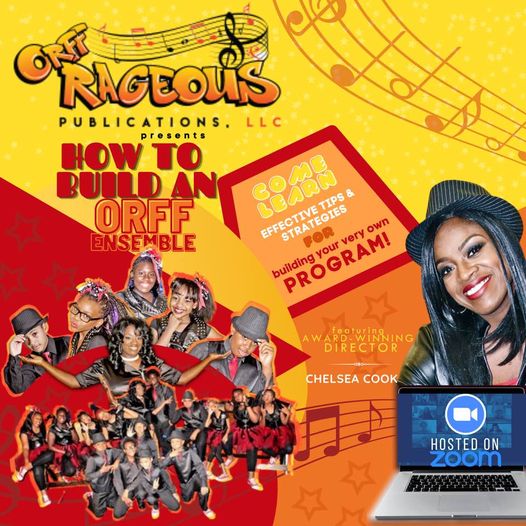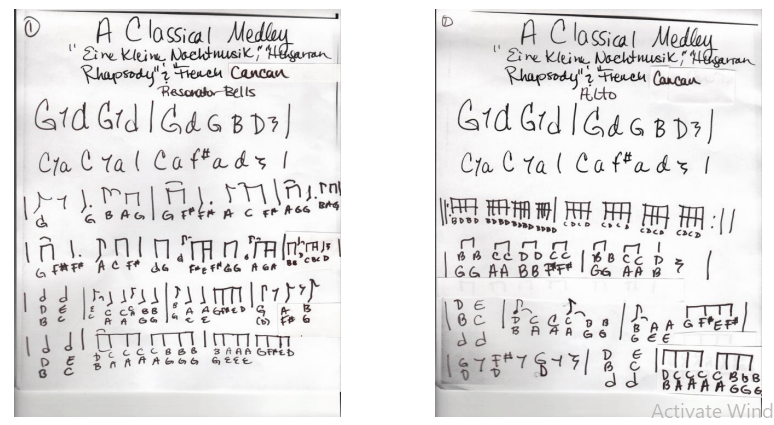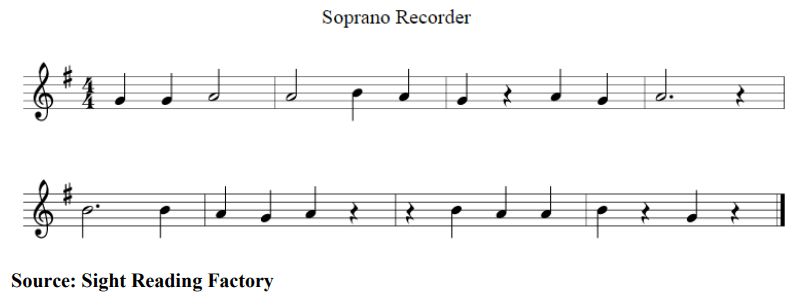
What is Orff?
I never want to assume that everyone knows about the Orff-Schulwerk. Orff comes from the
German Composer Carl Orff and Schulwerk means school work. The Orff-Schulwerk is an
approach that combines music, movement, drama, and speech into lessons that are similar to a
child’s world of play.
It was Orff’s philosophy to utilize what was naturally in the child’s environment to expose them
to the things he wanted them to know musically.
Get Your Training
If you’re going to be an Orff specialist you need to legitimize yourself. It’s like practicing
medicine without a license. Nobody’s going to take you seriously. The first step you want to take
in building an Orff program is to enroll into the Orff-Schulwerk levels workshops. These courses
are offered through a two-week seminar during the summer months across the United States. In
order to find the workshop nearest you, you’ll need to visit the American Orff-Schulwerk
Association at https://aosa.org/chapters/
I’m not saying that taking the Orff-schulwerk will make you an Orff guru. It won’t. But it will
give you the foundation you need to understand how the process works and to be successful.
Orff Practitioners vs. Orff Specialists
A practitioner is a person actively engaged in an art, discipline, or profession. Although they are
highly educated, their practices are limited to generic, primary care.
A specialist is a person whose role tends to be administrative, research, and/or program
development-oriented. They also work in a variety of different settings.
Essential Elements of Building a Successful Group of Young Musicians
Know Your Ensemble:-
If you are going to dare to teach anything like Eine Kleine Nachtmusik to a class full of 3rd, 4th
and 5th graders you need know what you’re working with.
One of the best solutions to this dilemma is something that I learned as a Kindergarten
Paraprofessional called chunking.
Chunking in psychology is a process by which individual pieces of information are bound
together into a meaningful whole (Neath & Surprenant, 2003). Using this strategy, I took the
reverse approach to this process and assessed the skill sets of each of my students and then
divided the ensemble into the following groups:
- Eagles
- Ducks
- Penguins
(Based on Classical Music)
The Eagles are going to be your most advanced students. These are the students that I typically
place on the melodic lines because the melody is usually harder to play. The Ducks are your
intermediate students or what I like to refer to as your Eagles in training. These students perform
better with a group of others of like skill. I usually place them on the harmonic sections.
Last but certainly not least are the Penguins. Although penguins don’t fly, they are fantastic
swimmers and have a notable walk. These musicians are the foundation of your group. They are
excellent with maintaining the steady beat and holding the entire ensemble together.
Therefore, they play the bass lines. (Depending on Repertoire)
After setting up your group, I would designate a leader from each section. This will give you the
ability to be in several places at once.
Setting Realistic Goals and Sticking with Them
When I was just doing my ensemble the “Dynamic Dolphins” at Dunaire Elementary, we met
every day before school for 30 minutes and after school twice per week for two hours.
Essentially, these kids were getting 6.5 hours of music every week! However, when I began
directing the district-wide ensemble “Dynamix”, the practices went from 5 days to 6 days a
week. We were practicing from anywhere between about 15-20hrs per week with evening and
weekend rehearsals combined. As you can imagine, with this much practice, they quickly master
pieces in a relatively short period of time ranging from 2-3 months.
Create a Reading Chart
This is the easiest way to transfer the score to your young musicians. Creating a kid-friendly
guide for your students is the quickest way to connect what your students are seeing visually to
what they are learning musically.
Musical Literacy
Simple sight reading samples are great ways to build your musicians’ musical vocabulary. Although this was written for soprano recorder, it works well for mallet instruments as well.
Vegetables First, Dessert Last
Continuing with the Chunking method, I organize my arrangements (program) in order of difficulty and give each piece a time frame for completion. I never teach the easiest piece first!

The Two Types of Orff Ensembles
- Orffinary
- Orffrageous
Orffinary: The term simply means ordinary. This is not to say that you can’t create anything extraordinary
from this approach, I certainly did. In an ensemble like this is where the most magic happens.
Requirements:-
No auditions required.
Performs for the local school and on occasion, at other local community events.
Competitions not required, but encouraged.
Free participation with the exception of shirts for the group.
1-2 rehearsals per week.
Repertoire can be purchased online at Orffrageous Publications, Teachers Pay Teachers
or if you can’t find an arrangement, you can pull ideas from a piano-reduction at
https://www.musicnotes.com/. If you want to publish your arrangement, be sure to obtain
the licenses! Most licenses are held by the Hal Leonard Corporation
You probably won’t achieve everything you want in this approach, but one of the things I can
appreciate is that I was truly able to develop my skills not only as a teacher, but as an arranger
and composer! (Necessity is the mother of invention, my early arrangements, I was just doing
what was best for my students- but inadvertently made a market for myself) Your group will also
develop organically. When your group is an open canvas, you’re not going to readily know the
skill sets of all of your musicians. However, this can work to your advantage. The beauty of
being an Orff teacher is that you and the students can create your own arrangements that are
unique to your ensemble. This is a technique that you will only learn from the Orff-Schulwerk
training.
Setup
Your group will need to be categorized into 3 sections:
- Eagles
- Ducks
- Penguins
Orffrageous
None of my ensembles have ever been ordinary. Ever. The fun part is that no one ever expects
what they get when they attend one of our performances! Not only are onlookers amazed at what
they hear, they are also made part of the program. This quintessential Orff experience is what I
call “Orffrageous”. This is the act of using Orff to push the limits beyond expectations.
Requirements:-
- Auditions required.
- Performing at a variety of events throughout the year. (In and out of state)
- Competitions are a must! The feedback is invaluable, not only for your students, but you
as well. - Participation Fee- This will assist with travel expenses, awards, and if you want to
include the price of uniforms. Otherwise the uniforms can be a separate fee. - 3-4 rehearsals per week at minimum.
Repertoire
- Orffrageous is not only a type of ensemble, it’s a brand. These extraordinary
arrangements that are performed by my ensemble can only be found at
www.orffrageouspublications.com or if you’re feeling extra fancy and you want to create
your own, you can pull ideas from a piano-reduction at https://www.musicnotes.com/. If
you want to publish your arrangement, be sure to obtain the licenses! Most licenses can
be obtained from the Hal Leonard Corporation. - Check out this audition process https://youtu.be/X6gtKqTEUKw
Setup- Eagles only
- Everyone has to be either an Eagle or an Eagle in the making. Otherwise, you’ll drive
yourself nuts.
Build-A-Program
Instruments
Unfortunately, there is no booster organization at the elementary level and Orff instruments are
expensive. I would recommend that if you are just getting started, to build your program with
resonator bells, chromatic glockenspiels, and at least 2-3 bass, alto, and soprano xylophones and
metallophones. You could also ask around to see who may or may not be utilizing the
equipment. There are music teachers out there that don’t touch Orff instruments. (AOSA)
Be aware that standard Orff instruments only come with 2 accidentals F sharp and B flat.
Therefore, it will be a challenge to perform certain Orffrageous pieces without all of the
necessary equipment.
I highly recommend the following resources for your ensemble needs:
- Periople- Bergerault, inc. –Home of the chromatic Orff instruments (Easy to transport
and cost efficient) - You’d be surprised at what you could find on Ebay. I actually found quality
equipment…and it’s YOURS if you purchase with your own funds.


